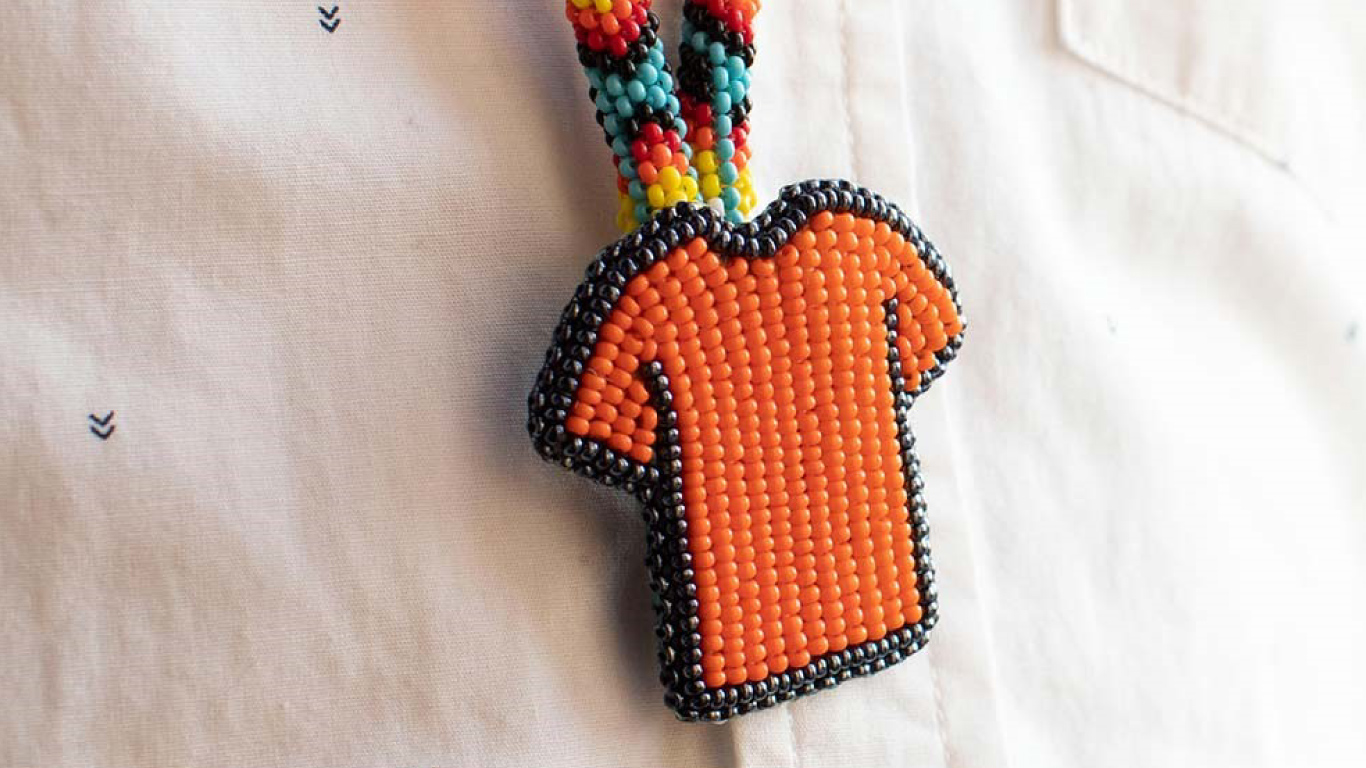
Each year, September 30 marks the National Day for Truth and Reconciliation.
The day honours the children who never returned home and Survivors of residential schools, as well as their families and communities. Public commemoration of the tragic and painful history and ongoing impacts of residential schools is a vital component of the reconciliation process.
The Indigenous population in Canada is not homogeneous. Indigenous peoples include First Nations people, Métis, and Inuit—each with their own distinct cultures, languages, and histories—as well as their own unique experiences of colonization.
Further, within these three groups, it is important to note that individuals will have differing experiences based on their intersecting identities.
The Indigenous population in Canada is one of the largest among countries that share a similar colonial history.
Indigenous languages across Canada
Over 70 Indigenous languages were reported in the 2021 Census, with 237,420 Indigenous people reporting that they could speak an Indigenous language well enough to conduct a conversation. This number represents 13.1% of the Indigenous population.
The most commonly spoken Indigenous languages among Indigenous people were Cree languages, with 86,480 speakers, followed by Inuktut and Ojibway languages.
All Indigenous languages in Canada are considered at risk, with several classified as endangered and some critically endangered. As documented by the Truth and Reconciliation Commission, intergenerational impacts of cultural genocide and discriminatory colonial practices, most notably residential schools, are at the root cause of Indigenous languages in Canada being at risk.
The Indigenous Languages Act received Royal Assent on June 21, 2019. The overall purpose of the act is to support the efforts of Indigenous peoples to reclaim, revitalize, maintain and strengthen Indigenous languages.
In 2021, the number of people who could speak an Indigenous language was 10,750 lower than in 2016, the first decline since comparable data started being collected in 1991.
The decline in the number of Indigenous language speakers was attributable to a steady decrease in the number of Indigenous people with an Indigenous mother tongue. A mother tongue is the language first learned at home in childhood and still understood.
In 2021, 184,170 Indigenous people reported an Indigenous mother tongue, 14,120 fewer people compared with 2016.
The colonial history of Canada has profoundly affected Indigenous peoples, their governance, languages and cultures. However, through the efforts and resilience of Indigenous people and their communities, important steps have been and will continue to be taken toward reconciliation and the rebuilding of ties to the unique cultures and languages of First Nations people, Métis, and Inuit.
An increasing number of people are learning an Indigenous language as a second language. The share of Indigenous language speakers who learned their language as a second language rose from 24.8% in 2016 to 27.7% in 2021.
In 2017, half of Indigenous youth reported that speaking an Indigenous language was important or very important to them. Most also reported making an effort to learn more about their history, traditions and culture: 71.4% for First Nations youth living off reserve, 64.6% for Métis and 74.4% for Inuit.
In Atlantic Canada, First Nations children aged 14 years and younger were more likely to be able to speak an Indigenous language (14.0%) than First Nations adults aged 65 years and older (12.3%) in 2021.
In the Inuit homeland of Inuit Nunangat, three-quarters (74.7%) of Inuit children aged younger than 15 years old in 2021 could speak Inuktut.
Michif is a uniquely Métis language that originated as a combination of Cree, Ojibway and French and borrows from English and other Indigenous languages. In 2021, 1,485 Métis reported being able to have a conversation in Michif, up 460 speakers (+44.9%) compared with 2016.
While some Indigenous languages experienced large proportional growth since 2016, it is important to note that all Indigenous languages are still considered at risk and most experienced declines in the number of speakers.
Wearing orange
Both the National Day for Truth and Reconciliation and Orange Shirt Day take place on September 30.
Orange Shirt Day is an Indigenous-led grassroots commemorative day intended to raise awareness of the individual, family, and community intergenerational impacts of residential schools and to promote the concept of “Every Child Matters.”
The orange shirt is a symbol of the stripping away of culture, freedom and self-esteem experienced by Indigenous children over generations.
On September 30, we encourage all Canadians to wear orange to honour the thousands of Survivors of residential schools.
Learn more
Much of Canada’s cultural, economic and political landscape has been shaped by the achievements of Indigenous people. Generations of Indigenous people, including leaders, Elders, healers, educators, business leaders, artists and activists, have made invaluable contributions, touching all aspects of life in Canada.
More information is available on Statistics Canada’s Statistics on Indigenous Peoples portal, a central location where users can find links to data and information products related to First Nations people, Métis and Inuit, including community profiles.
Visit The National Centre for Truth and Reconciliation, where Survivors, their families, educators, researchers, and the public can examine the residential school system more deeply with the goal of fostering reconciliation and healing.
StatsCAN app
Did you know you can read StatsCAN Plus articles and more on the StatsCAN app? If you’re already using the app, let us know what you think by leaving a review in the Apple App Store and Google Play.
Contact information
For more information, contact the Statistical Information Service (toll-free 1-800-263-1136; 514-283-8300; infostats@statcan.gc.ca) or Media Relations (statcan.mediahotline-ligneinfomedias.statcan@statcan.gc.ca).
